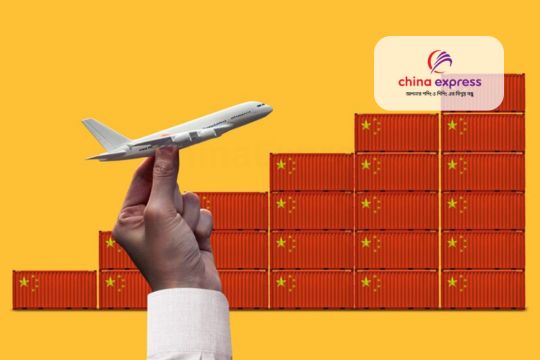Tips for First-Time Buyers Sourcing from China

Sourcing products from China can be a game-changer for small businesses, offering access to affordable, high-quality goods. However, if you're a first-time buyer, navigating the sourcing process might feel overwhelming. From choosing suppliers to ensuring product quality and handling logistics, there’s much to consider. This guide will provide detailed insights and practical tips to help you source from China successfully.
1. Understand the Market Landscape
China is the world’s largest exporter, with total exports exceeding $3.5 trillion in 2023. Popular sourcing platforms include:
-
Alibaba: Ideal for wholesale buyers.
-
1688.com: Focuses on bulk purchasing at low prices.
-
AliExpress: Suitable for smaller orders or dropshipping.
-
Taobao: A consumer-focused platform for retail purchases.
Each platform caters to different needs, so research thoroughly to find one that aligns with your business goals.
2. Start Small: Test the Waters
Before committing to large orders, start small to:
-
Test supplier reliability.
-
Evaluate product quality.
-
Understand shipping and logistics.
For example, order a sample batch of 10-20 items to verify quality standards and assess packaging before scaling up.
3. Vet Your Supplier
Choosing a reliable supplier is critical. Use these steps:
-
Verify Credentials: Ensure the supplier has the necessary certifications, such as ISO or CE.
-
Check Reviews: Look for feedback on platforms like Alibaba or third-party review sites.
-
Request Factory Audits: Large suppliers often welcome audits to showcase their credibility.
-
Communicate Clearly: Assess their response time and willingness to answer questions.
Pro Tip: Avoid suppliers with overly generic responses or reluctance to share details about their operations.
4. Focus on Quality Control
Quality issues are a common challenge. Implement these measures:
-
Inspections: Invest in third-party inspection services such as SGS or Bureau Veritas. Inspections typically cost between $200-$400 per day.
-
Detailed Specifications: Clearly outline product dimensions, materials, and packaging in contracts.
-
Samples: Always request samples before placing bulk orders.
5. Understand Payment Methods and Terms
Safe payment practices minimize financial risks. Popular payment methods include:
-
Bank Transfers (T/T): Common for bulk purchases. Negotiate a 30% upfront, 70% on delivery model.
-
PayPal: Suitable for small orders but involves higher fees (~4%).
-
Letter of Credit (L/C): Ideal for large transactions, offering financial security for both parties.
6. Factor in Shipping and Customs Costs
Shipping costs can range from 5%-20% of the product value, depending on the shipping method:
-
Air Freight: Faster but expensive, taking 5-7 days. Ideal for urgent orders.
-
Sea Freight: Economical for bulk orders but slower, taking 20-40 days.
Ensure you also account for customs duties, which vary based on the product category. For example:
-
Electronics: ~10%-15% duty.
-
Apparel: ~25%-30% duty.
Pro Tip: Partner with a freight forwarder for streamlined logistics and customs clearance.
7. Plan for Delays
Delays in production or shipping are common when sourcing internationally. Consider these tips:
-
Set Buffer Periods: Order 2-3 weeks earlier than needed.
-
Track Orders: Use tracking tools to stay updated on shipment progress.
8. Understand MOQs (Minimum Order Quantities)
Most suppliers require buyers to meet MOQs, typically 500-1000 units per order. Negotiate with the supplier if you're a first-time buyer; many are flexible with small trial orders.
9. Protect Your Intellectual Property (IP)
If you're sourcing proprietary products, safeguard your designs with these measures:
-
Non-Disclosure Agreements (NDAs): Sign NDAs with your supplier.
-
Trademarks/Patents: Register your brand in China to avoid counterfeit issues.
10. Establish a Long-Term Relationship
Building a good relationship with your supplier can lead to benefits such as:
-
Discounts: Regular buyers often enjoy price reductions.
-
Priority Processing: Faster production and shipping times.
-
Exclusive Deals: Access to limited stock or new product lines.
Frequently Asked Questions
Q1: Can I source small quantities from China as a first-time buyer?
Yes, many platforms like AliExpress and Taobao cater to small orders. Negotiate with suppliers on Alibaba for lower MOQs during your initial order.
Q2: What is the typical lead time for products sourced from China?
Production lead times vary by product type but average 30-45 days. Add shipping time to calculate total delivery timelines.
Q3: Are there hidden costs in sourcing products from China?
Yes, potential hidden costs include:
-
Customs duties.
-
Currency conversion fees.
-
Inspection charges.
Request a detailed quote from your supplier to avoid surprises.
Q4: How do I handle defective products?
Include a defect resolution clause in your contract. Most suppliers will replace defective items or provide a partial refund.
Q5: Do I need a sourcing agent?
While not mandatory, sourcing agents can simplify the process by:
-
Vetting suppliers.
-
Managing negotiations.
-
Handling quality inspections.
Sourcing from China is an excellent opportunity for small businesses to access high-quality products at competitive prices. However, success lies in diligent research, clear communication, and strategic planning. By following these expert tips, you can navigate the sourcing process confidently and build a thriving business with wholesale products from China.
